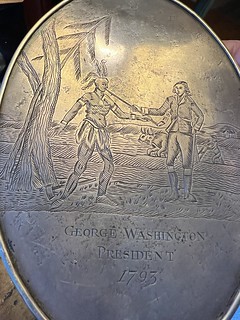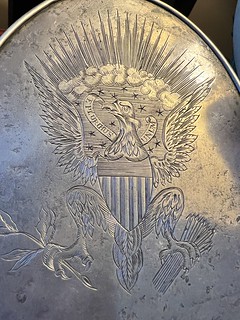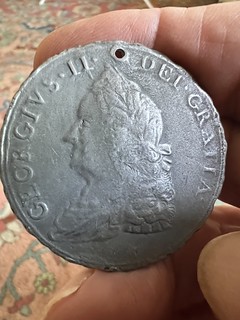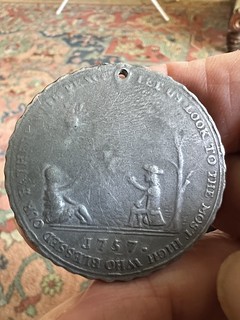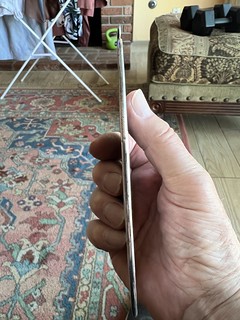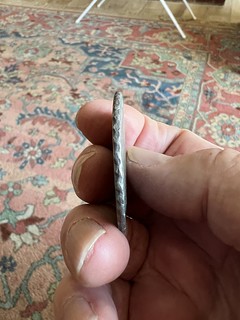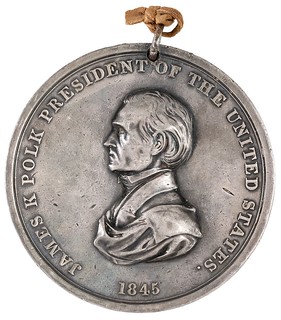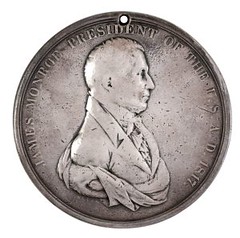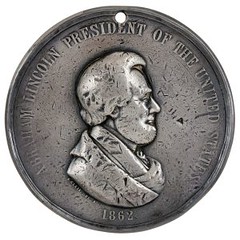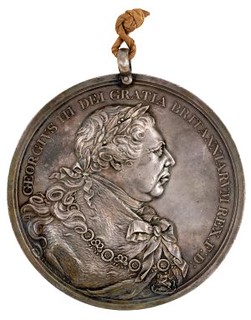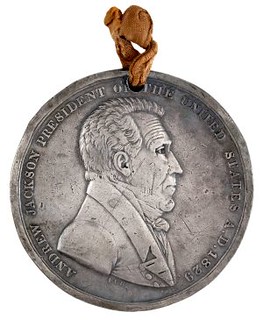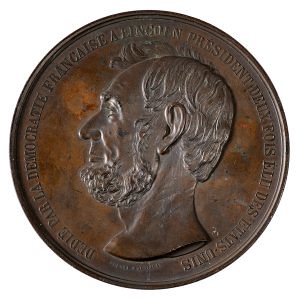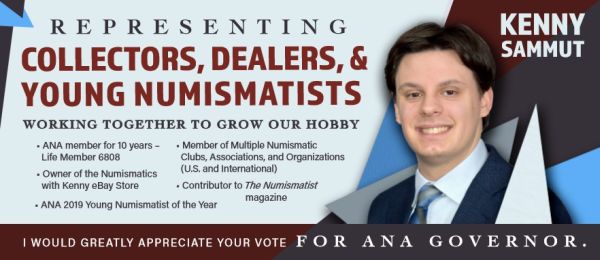
PREV ARTICLE
NEXT ARTICLE
FULL ISSUE
PREV FULL ISSUE
GARVAN FAMILY INDIAN PEACE MEDALS SOLDAlan V. Weinberg submitted images of recent auction purchases. -Editor You missed the May Pook and Pook PA antique auction containing several silver IPMs which recently sold. Many consigned by descendants of the Mabel Garvan family who donated many rare numismatic items to Yale University, but apparently not all. The auction house labeled many of the medals as "20th century replicas" which scared many potential bidders off. They weren't replicas. The premier item was a 152mm oval 1793 engraved IPM in ext fine condition for which I was prepared to bid a solid 6 figures. I won it on the phone for $6500 hammer. The buy of a lifetime, and a duplicate for me. I also won a well worn but genuine silver 1757 Duffield Geo II IPM overstruck, as are all, for $500 hammer, one of fewer than 15 known. Both were called modern replicas by the auction house. Other silver IPMs in same Pook & Pook auction included Lincoln, Tyler and Polk originals plus a Lincoln Magniadas 1865 bronze. Here's the auction company blog post from April 23, 2023. -Editor
Indian Peace Medals
The first medals created during George Washington's term of office were engraved with figures of a Native American and Minerva, representing America. Later medals were struck by the United States Mint in Philadelphia, including the Jefferson medals Lewis and Clark famously took along on their 1804 expedition to the Pacific Ocean. These were the first to bear the image of an American president, with symbolic decoration on the reverse of clasped hands and a crossed tomahawk and peace pipe, with the words The medals provide material evidence of the rhetoric of a succession of government administrations as they sought to appear to be dealing fairly with the Native Americans. As European settlers expanded across North America, in the full belief that their dominion was destined by God, harmony and equality were hollow words. With successive years of Westward movement, the Presidential Indian Peace medals depict the progressive terms of peace through their iconography, as artists made decisions how best to portray the ideal of peace. In looking at the medals, the story is told in the background scenes on the reverse.
As noted by Klaus Lubbers, the compositional rhetoric of the medals changed along two paths. First, the previously symmetrical depictions of Native American and white subjects became imbalanced, the European American figure moving towards a central position and the Native American pushed to the periphery. Secondly, representations of European ideas of civilization and commerce began to crowd the background, denoting that the terms of peace had evolved from agreement between parties to capitulation to European ways. On only the second Presidential medal issued by George Washington, the symbolism begins on the Native American half of the background. Formerly blank, Beatrice Garvan notes By: Cynthia Beech Lawrence Sources:
Garvan, Beatrice,
Lubbers, Klaus,
Nash, Stephen, Indian Peace Medals Lot numbers: 389 and Garvan collection Lots 480A-480O
To read the complete article, see:
Wayne Homren, Editor The Numismatic Bibliomania Society is a non-profit organization promoting numismatic literature. See our web site at coinbooks.org. To submit items for publication in The E-Sylum, write to the Editor at this address: whomren@gmail.com To subscribe go to: https://my.binhost.com/lists/listinfo/esylum All Rights Reserved. NBS Home Page Contact the NBS webmaster 
|
